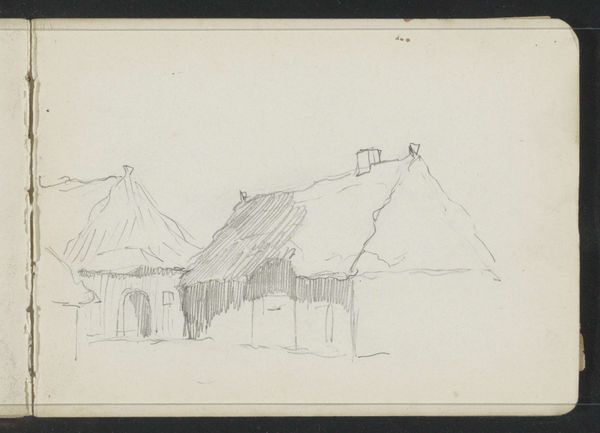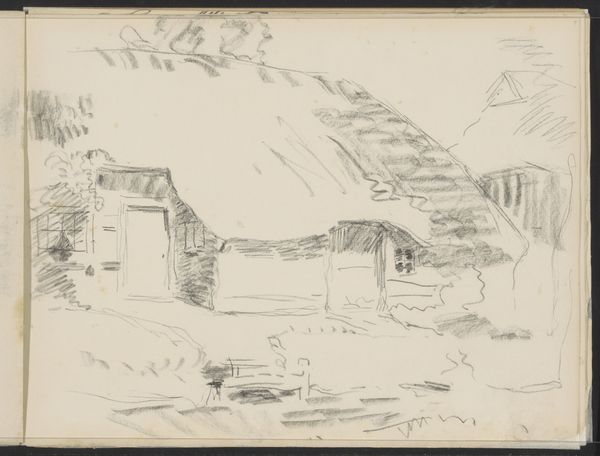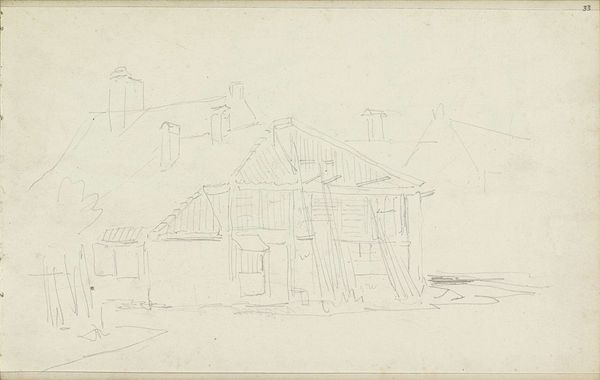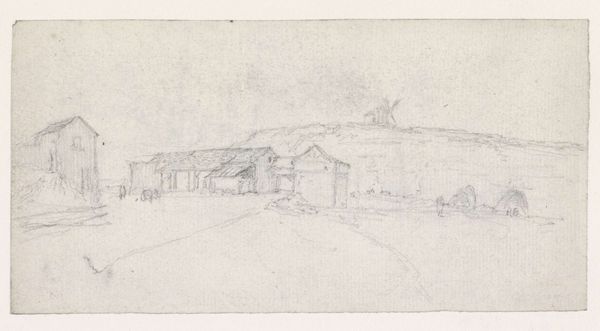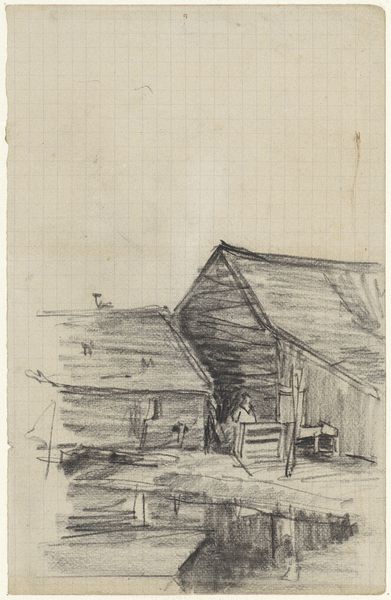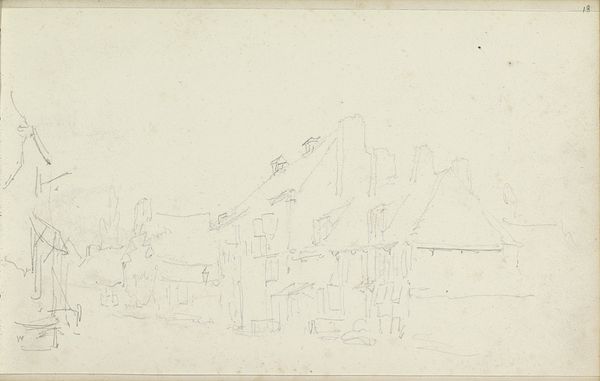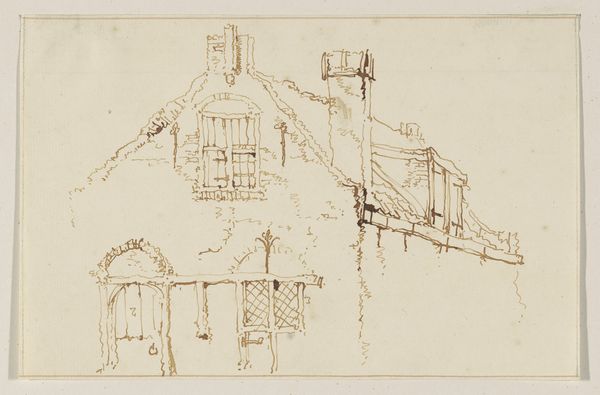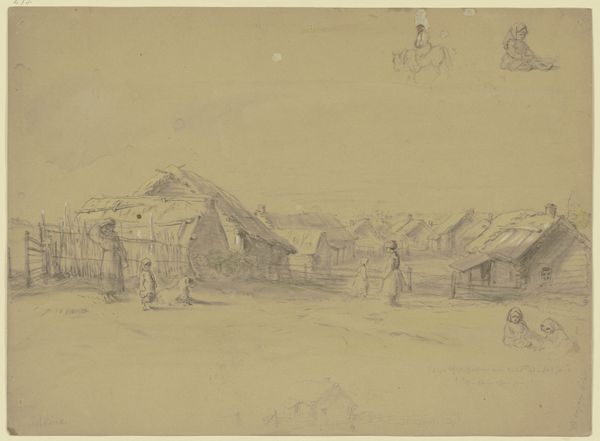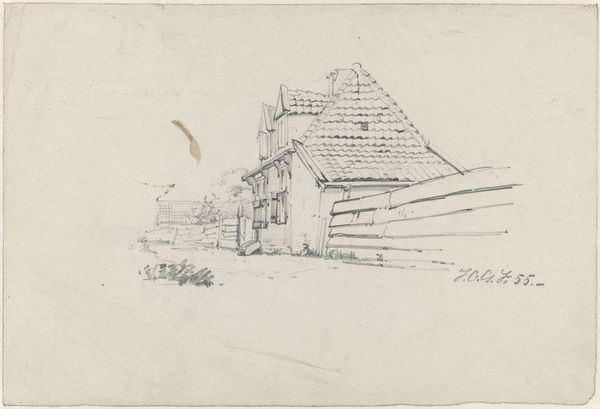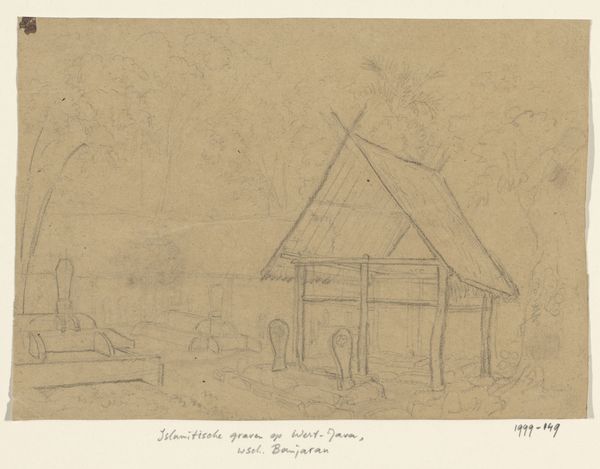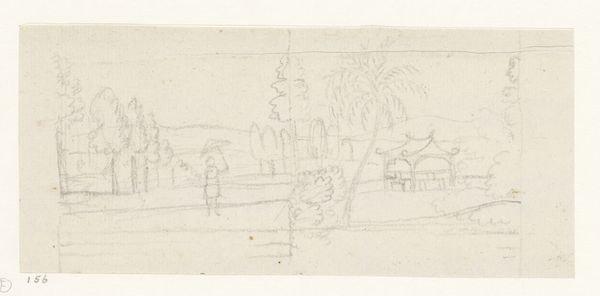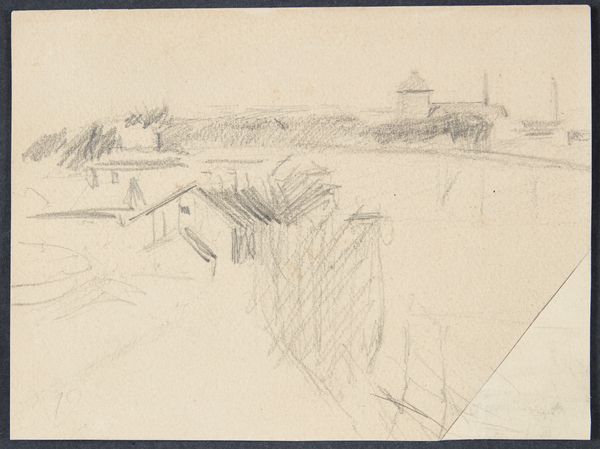
drawing, pencil
#
drawing
#
landscape
#
pencil
#
15_18th-century
#
realism
Dimensions: 179 mm (height) x 257 mm (width) (bladmaal)
Curator: Before us we have "Bærums smelteovn," or "Bærum Smelter," a pencil drawing dating to 1792, created by C.A. Lorentzen. It's currently held here at the SMK. What's your initial impression? Editor: Bleakly beautiful. I mean, it’s a drawing of an industrial site, a smelter, but there’s this muted quiet about it. It’s like Lorentzen has captured a stillness before or after the heat, the noise. The stark, almost brutalist, forms sit almost poetically on the landscape. Curator: Absolutely. And it’s interesting to consider the historical context. This smelter represents a moment of industrial expansion, reflecting the changing relationship between humans and the natural world in the late 18th century. Lorentzen's rendering prompts us to think about the environmental and social impacts, the early stages of what we now grapple with on a much larger scale. Editor: Exactly! The pencil work is so delicate, it belies the heavy industry it’s depicting. I’m picturing the intense labor, the workers, perhaps even enslaved workers, and there’s an unease that starts to permeate this otherwise seemingly tranquil sketch. The almost obsessive detail captures every angle and line of the wooden structures, this intense focus also hints at their industrial power. Curator: The composition, too, reinforces the smelter's dominance over the landscape, doesn’t it? Yet there's a certain romanticism in portraying industry, a reflection of its perceived progress. We must, of course, understand how "progress" at this time was directly linked to colonial exploitation and unequal power structures. It invites conversations about ecological justice, class, and the romanticizing of capitalist infrastructures. Editor: It really does. In its quiet way, this drawing makes you confront how something so unassuming can speak to such complicated realities. It shows that beneath the surface, history churns. A little bit like the smelter itself. Curator: I agree. It invites us to acknowledge the complex layers beneath seemingly straightforward representations of our past. It holds both historical value as well as a powerful contemporary relevance. Editor: Yeah, totally. And, I guess it also teaches me that sometimes the loudest statements are made in a whisper.
Comments
No comments
Be the first to comment and join the conversation on the ultimate creative platform.
